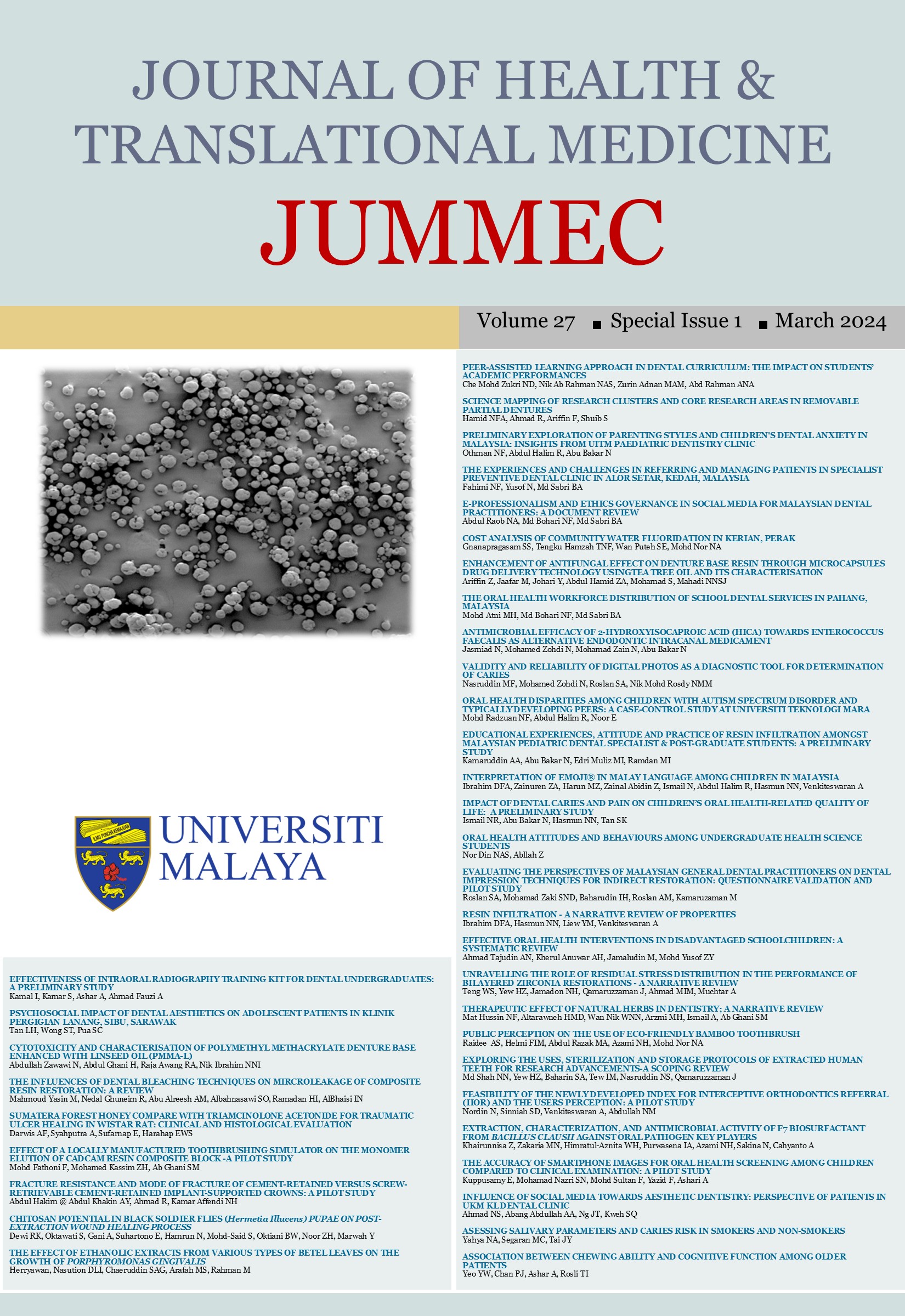UNRAVELLING THE ROLE OF RESIDUAL STRESS DISTRIBUTION IN THE PERFORMANCE OF BILAYERED ZIRCONIA RESTORATIONS – A NARRATIVE REVIEW
Received 2024-02-21; Accepted 2024-03-06; Published 2024-03-25
DOI:
https://doi.org/10.22452/jummec.sp2024no1.19Abstract
Bilayered zirconia restorations have gained significant popularity in modern dentistry due to their ability to combine the strength of zirconia with the natural aesthetics provided by porcelain veneers. However, the longevity and performance of these restorations can be influenced by the distribution of residual stresses within the material. This narrative review aims to explore the impact of residual stress distribution on the longevity of bilayered zirconia restorations, focusing on factors affecting stress levels, and potential failure modes and mechanisms. A Boolean search of the PubMed database was done which yielded 40 articles, of which 26 articles were included in this review. The narrative review begins with an introduction to bilayered zirconia restorations, highlighting their composition and advantages in dental applications as well as the different veneering techniques used. Subsequently, the analysis delves into stress distribution within the restoration, emphasizing its importance in determining the restoration's mechanical behaviour. Factors influencing residual stress in bilayered zirconia are explored, material properties, sintering parameters and veneering methods. Understanding these factors is crucial for optimizing stress management during restoration fabrication. In light of the influence of residual stress on restoration durability, mitigation strategies for reducing stress levels are discussed.
Downloads
Downloads
Published
Issue
Section
License
All authors agree that the article, if editorially accepted for publication, shall be licensed under the Creative Commons Attribution License 4.0 to allow others to freely access, copy and use research provided the author is correctly attributed, unless otherwise stated. All articles are available online without charge or other barriers to access. However, anyone wishing to reproduce large quantities of an article (250+) should inform the publisher. Any opinion expressed in the articles are those of the authors and do not reflect that of the University of Malaya, 50603 Kuala Lumpur, Malaysia.


